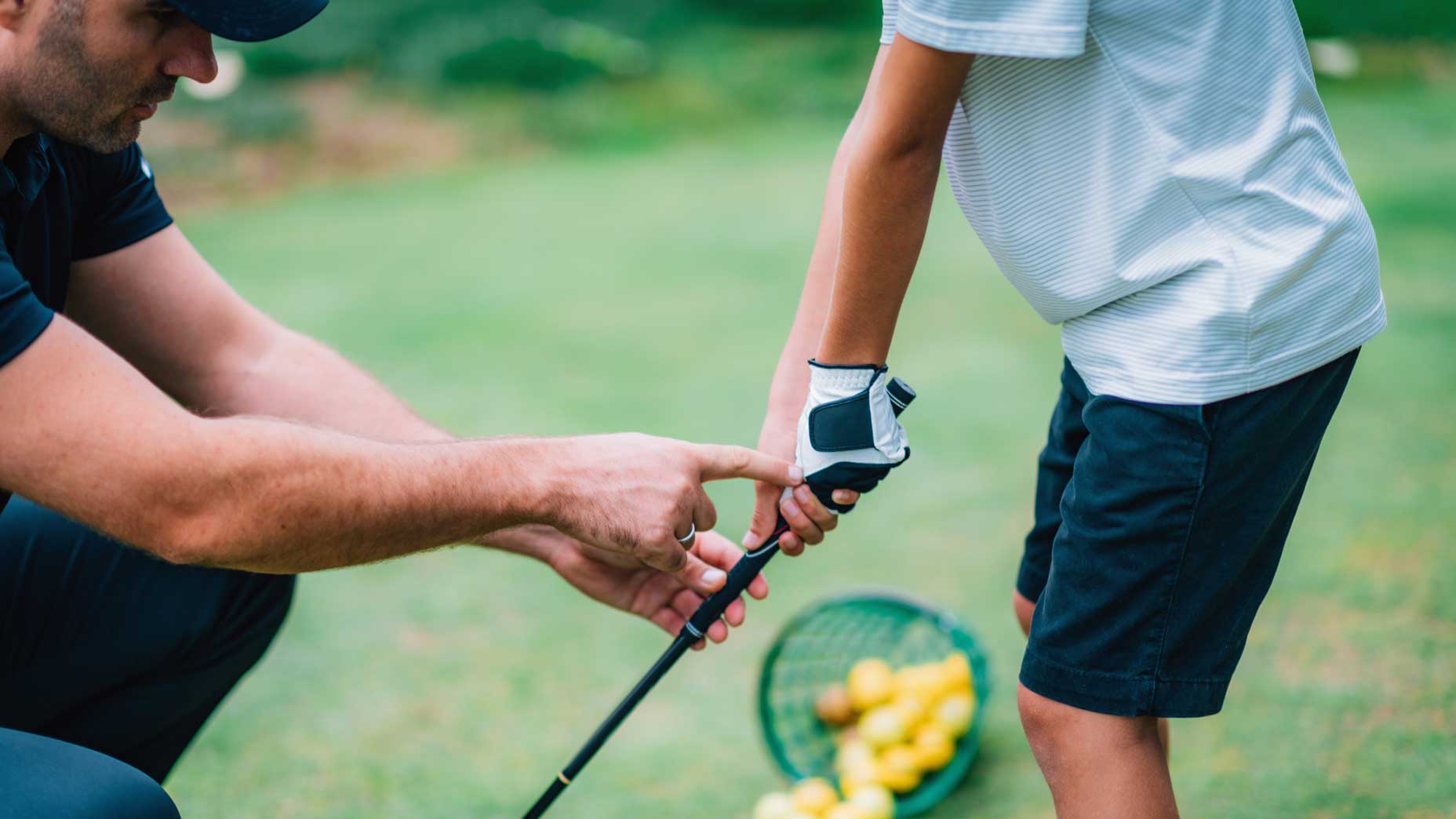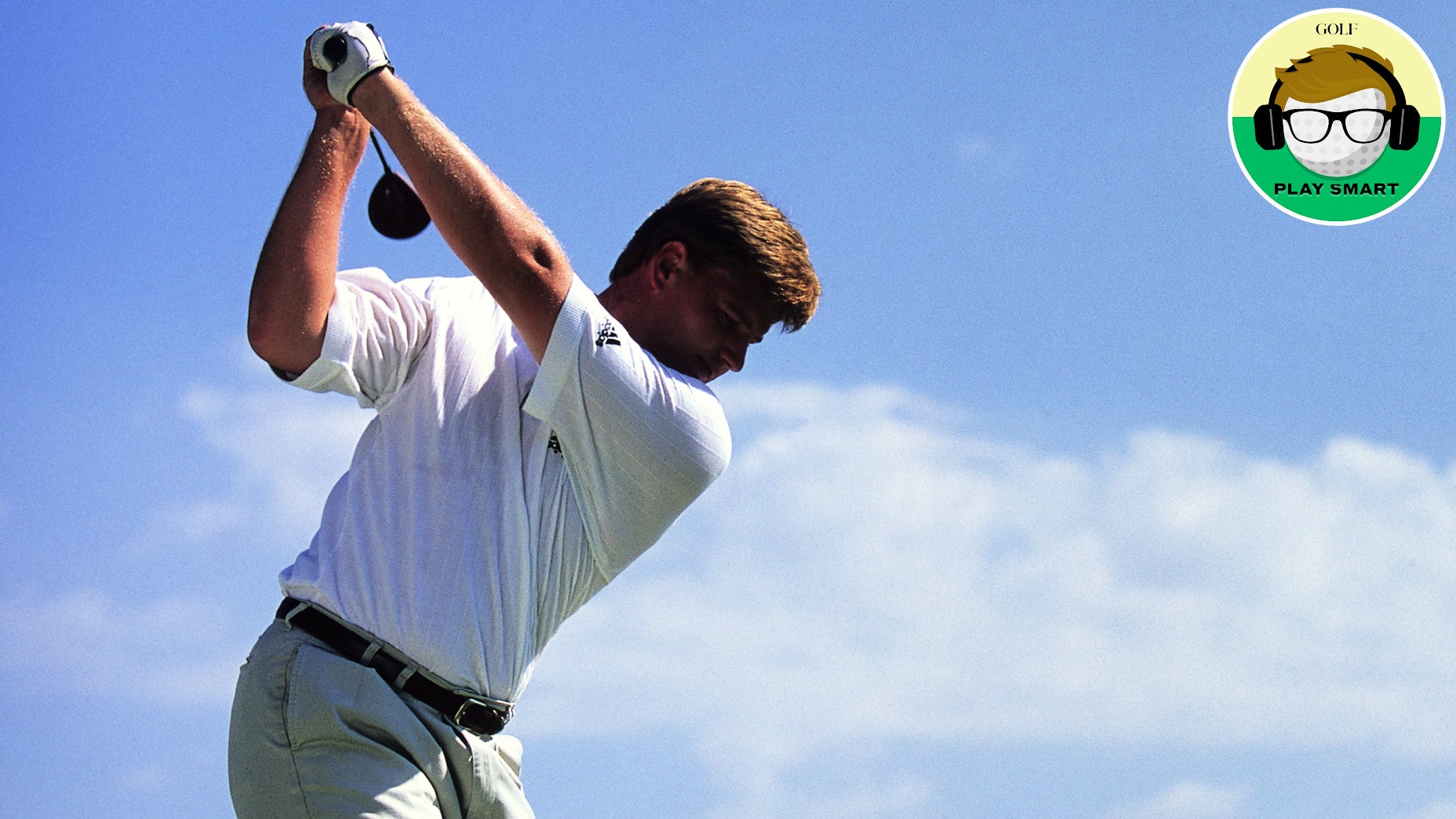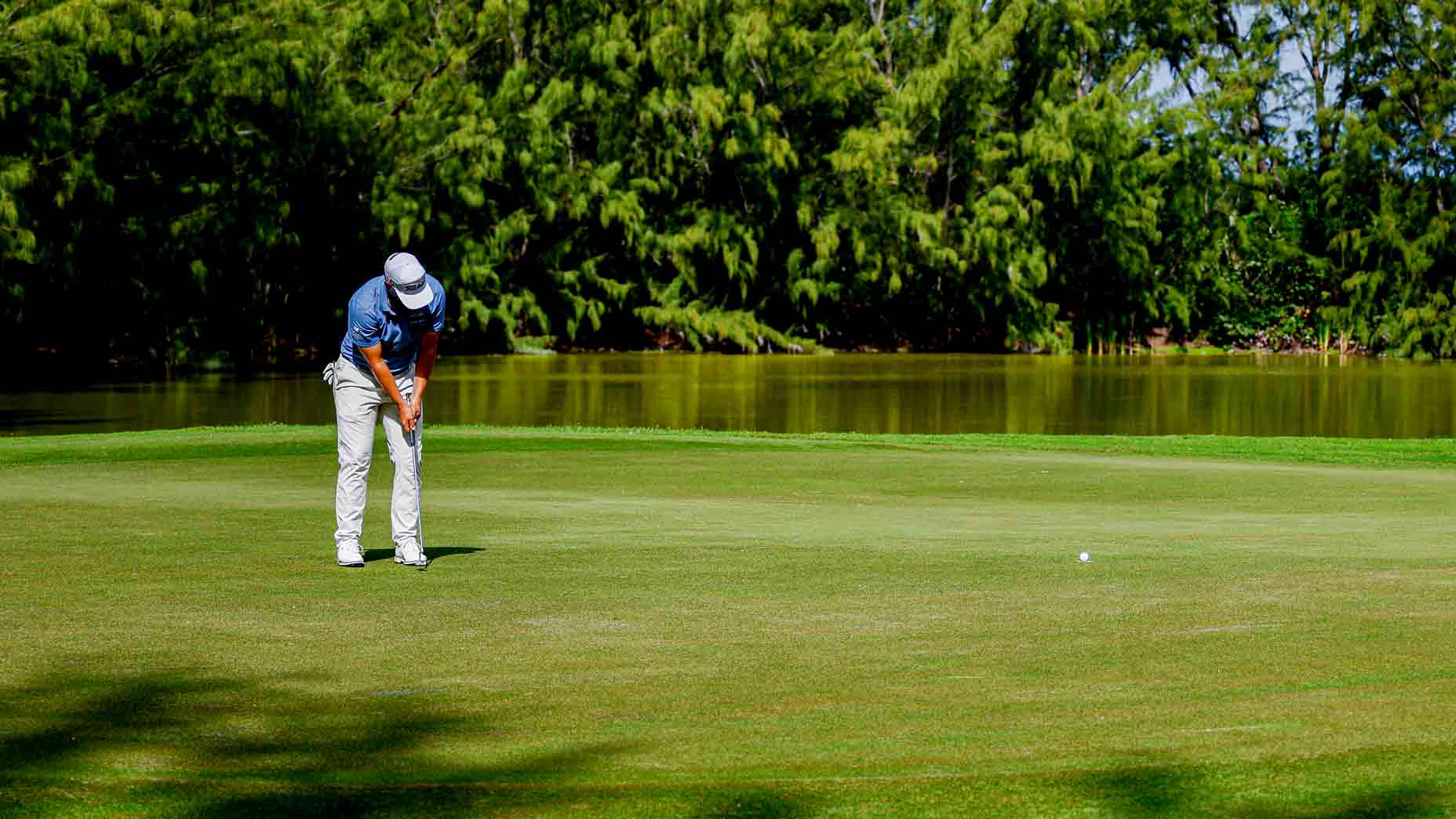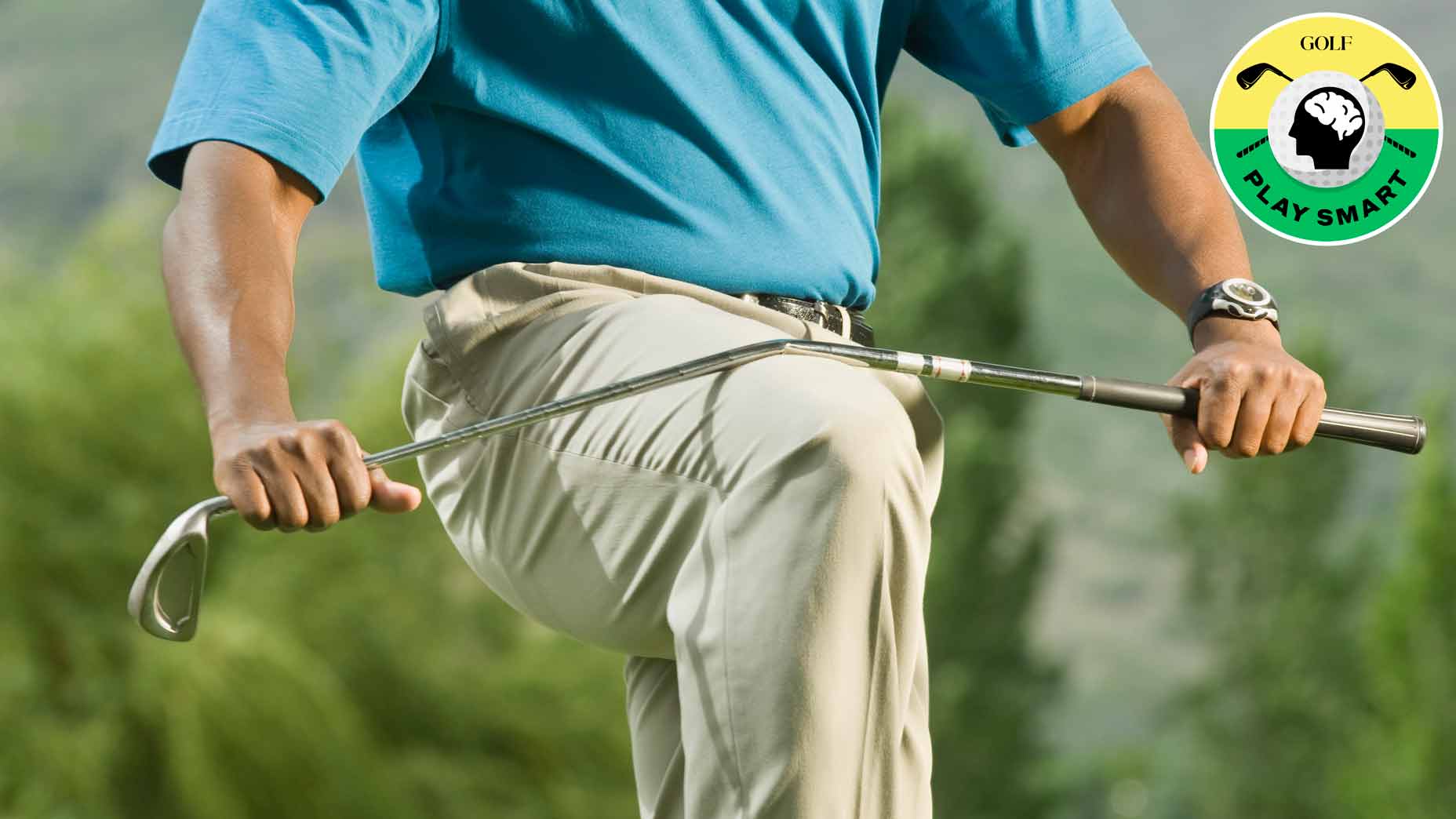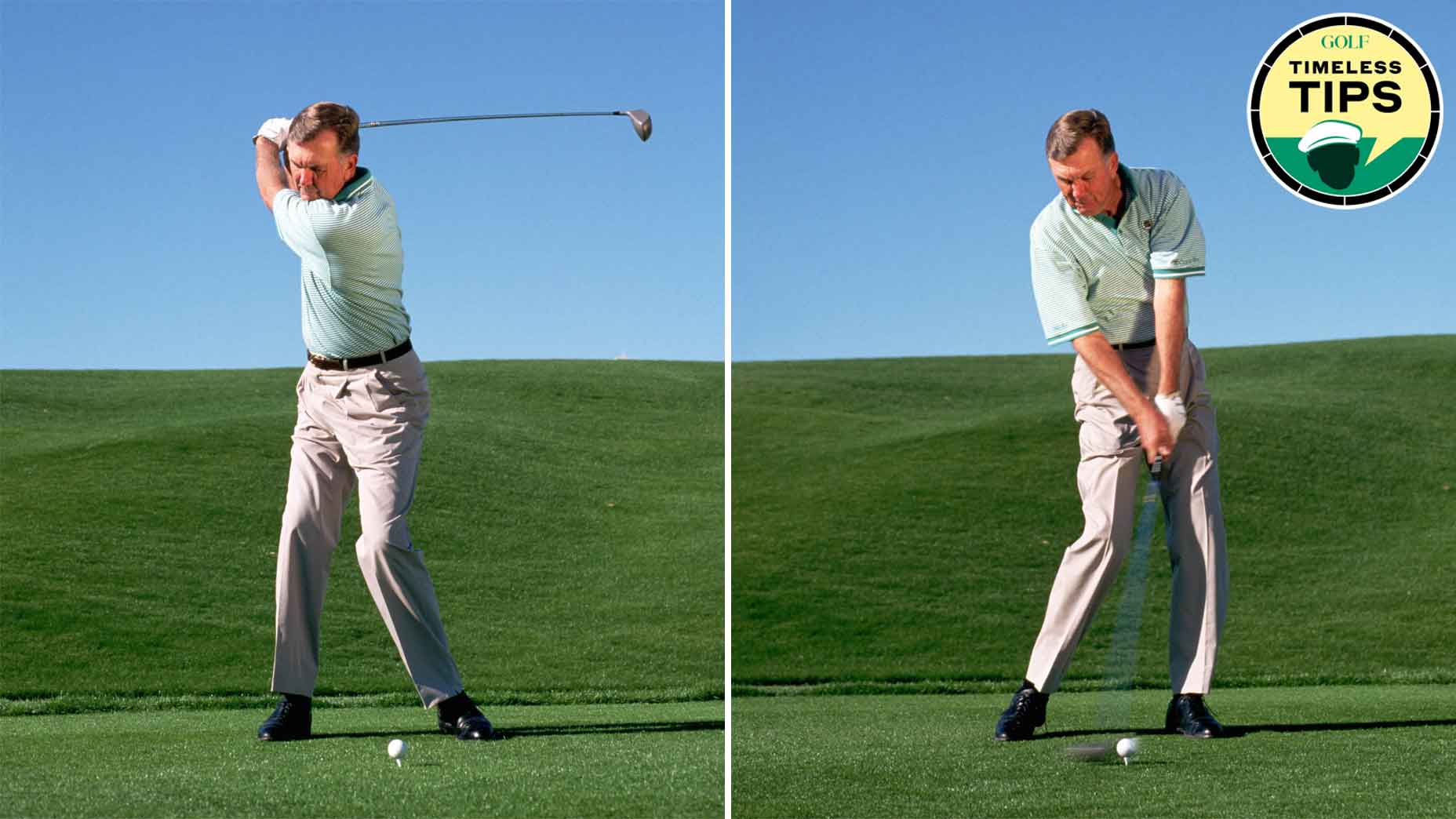Golf instruction is ever-evolving, but the best advice stands the test of time. In GOLF.com’s new series, Timeless Tips, we’re highlighting some of the greatest advice teachers and players have dispensed in the pages of GOLF Magazine. This week, we have five tips for a getting your game into mid-season form from our March 1982 issue. For unlimited access to the full GOLF Magazine digital archive, join InsideGOLF today; you’ll enjoy $140 of value for only $39.99/year.
Golfers rejoice! Spring is right around the corner and another golf season is upon us. It’s time to dust off the clubs and brace ourselves for another season of birdies and bogeys — hopefully more of the former than last year.
If you’re a golfer in a cold-weather state you likely haven’t touched your clubs much throughout the winter. This means you’re going to start off the season having to shake off some rust.
Or does it?
While you might not have played much during the winter months, it doesn’t necessarily mean you can’t quickly get back in mid-season form. You just need to take the proper steps. Below, we have five steps for quickly getting your game into mid-season form from the March 1982 issue of GOLF Magazine.
1. Check your fundamentals
Getting your game back in shape after a winter layoff is much like taking up the game as a beginner. You have to get comfortable all over again with your setup and swing. Yet so many golfers start the new season by beating a lot of balls and fail to see that there’s a big GAP in their thinking. “GAP” stands for Grip, Alignment and Posture. You must review these three fundamentals before hitting a lot of balls. If they’re wrong, a good consistent swing can’t happen.
The first step — and paramount — is to review your grip. Since the grip is your only contact with the club, don’t settle for anything less than the best.
Whatever type of grip you use, there are two essential points that are common to all good grips. First, your grip should promote a unified action of the hands. In your first experimental swings, check that your hands are working as a unit. Second, check that you have full control of the club throughout the swing. If you sense any unwanted movement of the club in your hands, have your grip checked out by your pro.
Once the grip is correct, review your grip pressure. If it’s wrong, your timing will be upset. Basically, you should think of holding the club with equal pressure from both hands. The most common errors are gripping too tightly with both hands, which mostly leads to swinging too fast, or gripping too tightly with the right hand to the point that it takes over the swing.
The second step — and the toughest, I think — is alignment. As a general rule, you want to position your feet, hips and shoulders parallel to the target line. But this is much easier said than done. So many times you think you’re square but in fact are aligned left or right of the target. This is why you should review your alignment constantly.
The top 10 fundamentals needed for a great golf swingBy: Kellie Stenzel, Top 100 Teacher
One of the best methods of review is to use a full-length mirror. Look at yourself from the front and side views as well. The mirror will never fool you. What you see in the mirror is how you’ll stand up to the ball when you go to the practice tee.
Another excellent way of checking your aim is to have a friend take a photo of your alignment in the instant before you hit a shot. The photograph won’t lie.
You can also check your alignment by reading the flight of the ball. An oversimplified version: if the ball flies from left to right, you’re standing open; if from right to left, you’re standing closed.
When you correct alignment, be aware that it’s all too easy to have your feet square, but your shoulders open or closed. Your shoulder alignment is the most important, because your shoulders establish the path of the swing. Also, if your shoulders are open, your ball will be too far forward in your stance, and too far back if they’re closed.
The third step is posture. After a layoff you can tend to slump forward, head down, spine curved, and maybe legs straight. Bad posture, by itself, will ruin the swing. You should work on a good ‘“‘ready’’ position—knees flexed, back nice and straight, chin up, and arms hanging freely from your shoulders. When I work on posture, I think of the two “Toms” — Tom Weiskopf and Tom Watson. They are marvelous models to emulate.
Summing up, think “‘GAP”’ this season. Only if your grip, alignment and posture are right can you make the swing you want. —Ben Crenshaw
2. Get flexible
I’m a big believer in staying in good physical condition for golf and for everyday living as well. Being in good condition can help you get a fast start this year, because the strong, supple player always has an edge.
I can think of four sports that are excellent for conditioning golfers because of the way they increase both strength and flexibility. They are running, swimming, skiing and bicycling. Beyond that there are some simple calisthenics and stretching exercises that I do regularly that I think you’ll find helpful, too.
One of the mainstays of my program are sit-ups. I do these with my knees bent and my feet hooked under some stationary object, such as a bed or dresser. Begin with your back flat on the floor, your hands behind your head. Then as you begin to sit up, your head moves down toward your chest. This creates a curve in your back that is the key to the effectiveness of the exercise, because it creates maximum contraction of the abdominal muscles, while stretching the muscles of the back. This combination makes sit-ups a wonderful loosening up exercise. I do 50 every morning. You should begin with whatever number you can do comfortably and then build gradually as your strength and flexibility increase.
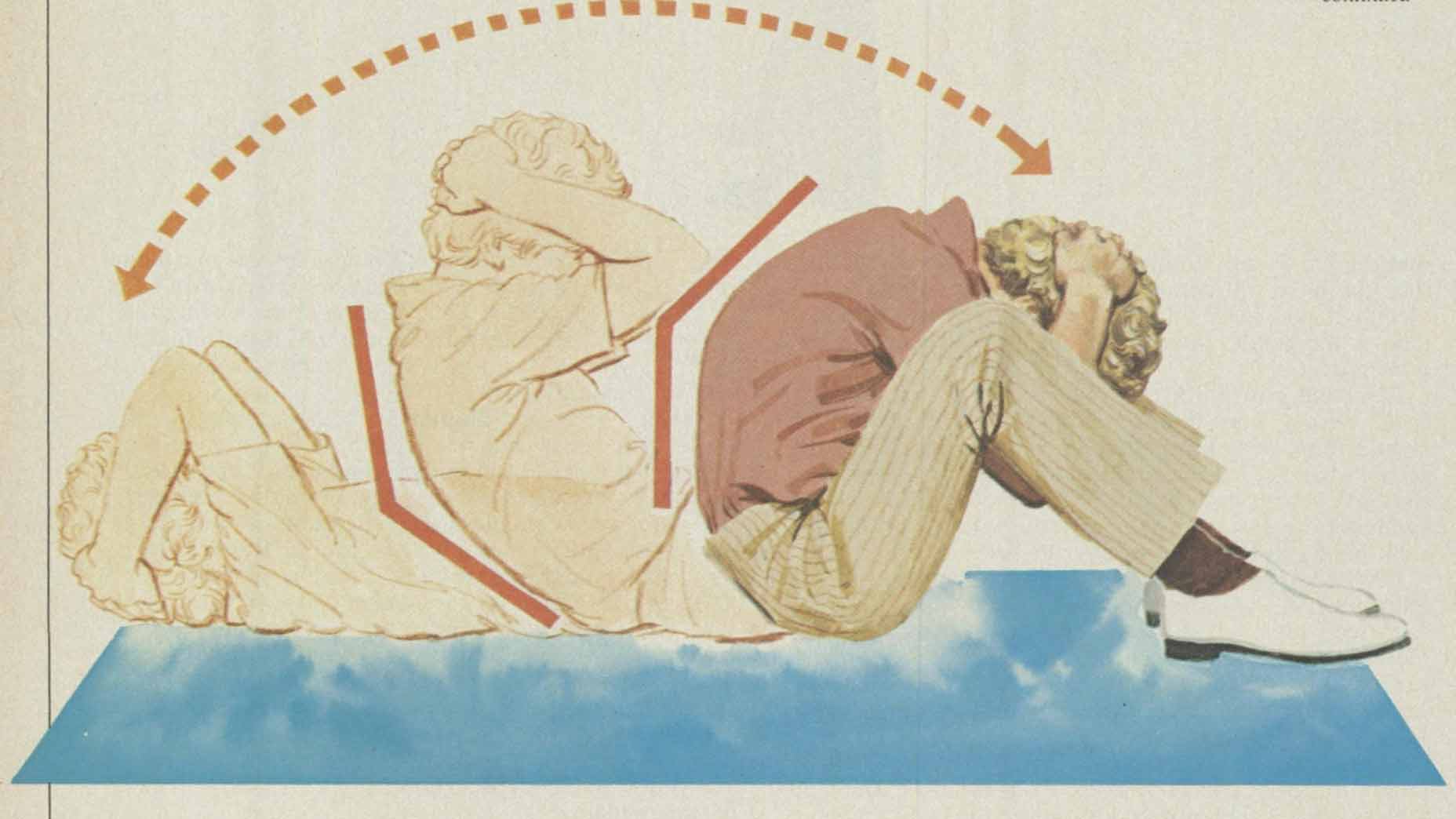
The next two exercises I’ll describe involve the legs. Strong and flexible legs support the upper body during the swing, just as the foundation supports a building. The first leg exercise (below) works the thighs like deep knee bends, but without straining the knees. You lean forward as far as you can, putting your weight onto the front leg as it bends, while pushing with the rear leg. The key here is to put as much weight as you can onto the front leg. I do 30 of these on each leg. Again, you should probably start with a smaller number, say 10 or so, and increase gradually.
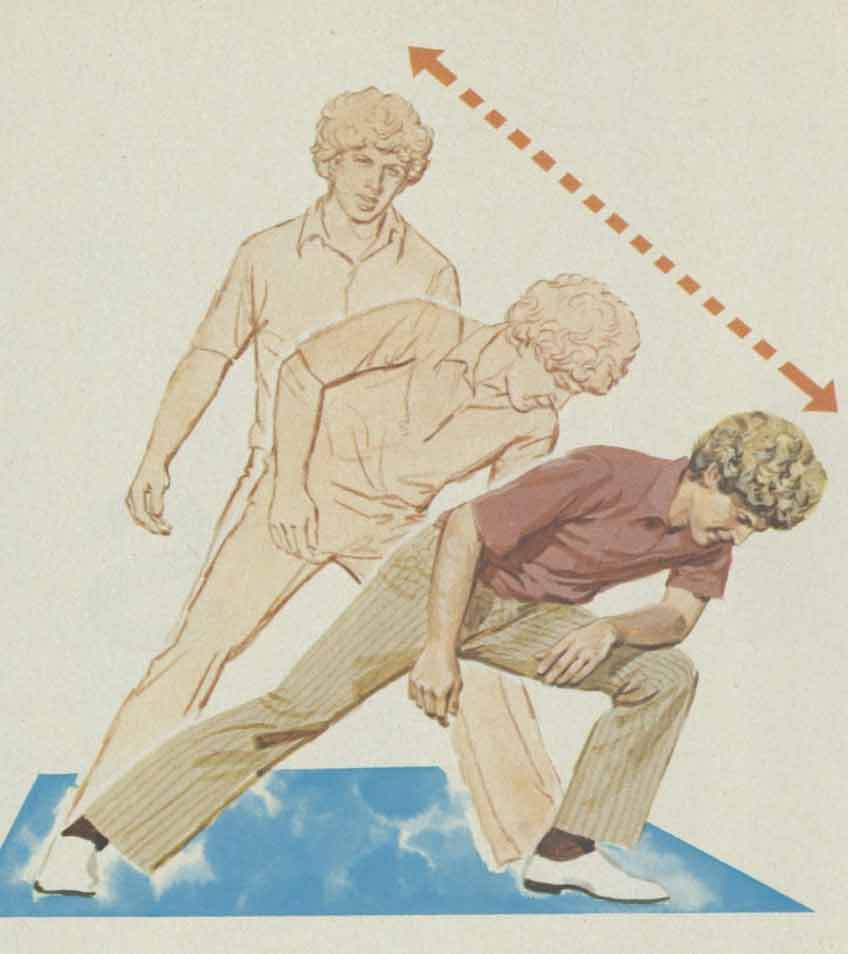
The third key exercise stretches the thigh muscles. Sitting on the ground or floor, extend one leg in front of you. Fold the other leg so that the foot is as near to that hip as possible. (You may not be able to get your foot as close to the hip as I have in the illustration, but do what you can comfortably.) Then lean back slowly, if you can, to increase the stretch you’ll feel in the folded leg. When you feel the stretch, hold the position for a count of eight, then release and repeat on the other side.
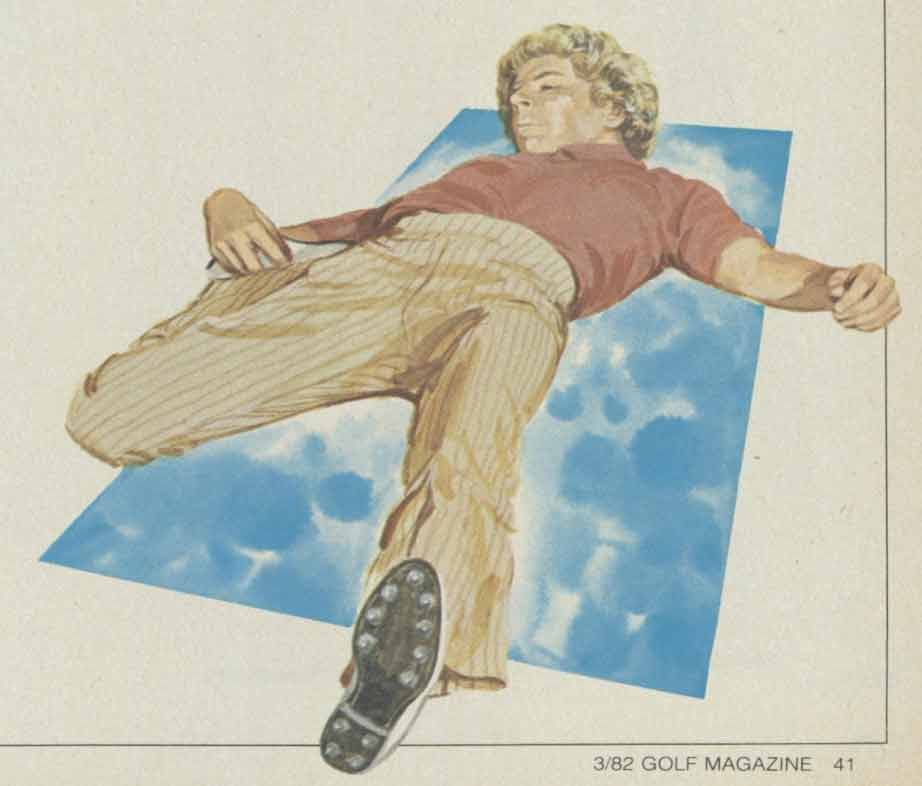
To these exercises I add some toe touching exercises and some practice swings with a golf club to loosen my upper body. The entire routine takes only a few minutes and following it I’m ready to play. And by the way, I use this routine, not hitting balls, to loosen my muscles.
I believe the body has an unlimited source of strength and flexibility and that everyone is only as fit as they make themselves. Once you’re in condition you’ll get off to a fast start this year and every year. —Bobby Clampett
3. Slow your tempo
Good tempo is important whether it’s the first round of the year or the last round of the club championship. Without proper tempo, you’ll never have control of the club on any shot from a drive to a six-foot putt. And even though most golfers are aware of the importance of tempo, reestablishing it after a long layoff can be a problem. But if you make a commitment to improve your tempo from the start of the season, you’ll eliminate some of the early-season struggles that follow a winter layoff, and increase the chances of making permanent improvement in your swing.
To me, good tempo is a ‘‘one-two’’ beat, like the rhythm of a metronome. You start the club back slowly, and move smoothly to the top. Then there is a leisurely change of direction and you swing the club down with gradual acceleration through impact and into the finish. There are no forced or sudden moves, no burst of acceleration at any point.
Drills are a good way to develop tempo at the start of the season and maintain it through the year. One of my favorite drills is to hit shots with a half swing, waist high to waist high, using a short iron. Spend a half-hour or so with this drill and you can’t help but feel the proper one-two tempo and as a result, slow down your swing. Another excellent drill is to hit balls with your feet together. Swinging from such a narrow stance forces you to slow your tempo, otherwise you’ll probably lose your balance and fall over. This drill also helps you develop a good ‘center’ position, that is, the head not swaying during the swing, and it improves your arm swing, which is the basis of good tempo.
This tempo tip could be your key to a better backswingBy: Luke Kerr-Dineen
Practicing without golf shoes, in either street or tennis shoes, also promotes good tempo. Without the grip of spikes, you’ll be somewhat uncertain of your balance and you’ll instinctively slow your swing.
Finally, I think you should start this season with the thought of making tempo a top priority in your game, just as it is in mine. I rarely think of swing mechanics on the course. I prefer to play with only the thought of making a smooth swing with good tempo. As long as I do that, I know I’ll usually hit a pretty good shot. For the average golfer, who tends to play with too many swing thoughts anyway, keying on tempo can go a long way toward freeing up and smoothing out your swing. If you think about it, the really bad shots you’ve hit probably resulted from a fast, jerky swing. So make a new-season resolution to slow your tempo and stick to it. You may not hit every shot perfectly, but you’ll hit a lot more of them well and your misses will be much more playable. —Peter Jacobsen
4. Rediscover your touch
Most amateurs are so eager to play after the winter layoff that the most they’ll do before they head for the first tee is to hit a few full shots, and mostly drives at that. You’ll rarely see them putting, chipping or playing sand shots. Although they neglect the short game completely, they’re the first ones to complain that they’ve lost their touch around and on the green. Yet every year it’s the same story. If you’d like to get your touch — and your scores — back quickly this year, here’s a program that will do the job for you.
The program should start before you get on the course. Keep a putter around the house and putt on a carpet. The best drill I know for touch is to lay down a small object such as a quarter on the carpet and instead of putting for line, putt for distance. See how close to the quarter you can stop the ball. It doesn’t matter whether your carpet is slow or fast, you’re still practicing your touch. Try to do this drill often, because the more you putt, the more you will groove your stroke.
Using the edge of a couch can improve your putting touch. Here’s howBy: Nick Dimengo
When you can get to the course, start with very short putts — from a couple of feet — and get used to seeing the ball go in the hole again. Play a game with yourself. When you make six in a row, move back two or three feet and repeat the process. Obviously, you will reach a point, say 15 feet, where it’s difficult to make six in a row. However, you’ll be pleasantly surprised when you develop your short stroke how much much better your long stroke becomes.
Once you’ve practiced short putts, then go to the longest putts you can find on your practice green and putt only 40- to 60-footers for a while. As you do this, be very conscious of how close to the hole you leave each ball. Very few greens are three-putted from taking the wrong line—97 per cent come from hitting the ball too far or leaving it short. The next step is to practice the short chip and run. Put the balls down maybe a foot off the green, and start with a 5- or 6-iron, chipping balls in the 10- to 15-foot range. Again, you’re not trying to hole the balls per se, you’re trying to leave them close. You’re not going to fail to get a chip up and down from direction; distance is what is critical.
When you’ve done well with these chips, move farther away and repeat the same drill with a 7- or 8-iron, and then repeat a little farther away with your 9-iron or a wedge.
Here’s another tip. I use the same method for chipping as I use for putting, down to the reverse overlap grip. I think most people would be more proficient in chipping if they did the same. All you’re doing in chipping is putting with loft. The loft merely carries the ball over the fringe. Once the ball hits the green, the shot is essentially a putt. I switch to my regular grip when I get up to my wedge.
The last step is sand. Your sand game is confidence. The more you practice it, the more you can feel what you can or can’t do, and the better it becomes. Follow the same general plan as for chipping. Start off with some little eight- to 10-yard shots before you move to longer and more difficult shots. —Raymond Floyd
5. Dial in your mental game
Getting the mental side of your game in shape at the start of a season will be a problem only if you allow it to be. Studies have shown that in many cases athletic performance improves following a layoff. I’d guess that this is because people instinctively rely more on the subconscious to perform a task that they haven’t done in a while. The subconscious is very good at performing these tasks, and as long as it has some control, it can reproduce a golf swing pretty well. So the key for the start of the season is to create an atmosphere that will allow you to perform.
I guess I’m one of the best at playing well after a layoff. Most of the tournaments I’ve won followed a layoff of at least a week. I think the reason for that is that a layoff renews my interest in playing. When I lay off, I don’t touch a club. That’s my formula for recharging my batteries.
I’m not suggesting that everyone should do exactly as I do. But I am saying that you should do whatever it is that sparks your interest in playing again, whether chipping and putting around the house, hitting balls into a net or watching golf on television. The more you’re interested in playing, the sharper your thinking will be.
The 1 mental mistake recreational golfers make way too oftenBy: Zephyr Melton
At the start of the season, your attitude toward the way you play is crucial. I think another reason that some golfers tend to | lay better after a layoff is that they’ve lowered their expectations. They’re a little unsure of their abilities, so they play smarter shots, shots that are well wit in their limitations, and they try to do their best. It’s a wonderful attitude. The trouble is that most golfers abandon it after the first round or two. The game then becomes a constant effort to hit every shot perfectly, and they either succeed or fail. The result is a lot of additional pressure.
My philosophy has always been to go out and do the best I can. If it all works out, fine. If it doesn’t, I don’t sweat it. This approach makes the game a lot more fun, and it prepares me for whatever comes my way during a round. And I think it will help you, too.
This is especially true at the beginning of the season, when course conditions may not be best. Suppose you get a poor lie in the fairway. If you’re living and dying on every shot, you’ll probably think, “Geez, what a bad break. Now I probably won’t be able to hit the green like I planned and I’ll probably wind up making a bogey.” My attitude would be, “All right, this is an interesting shot. Let’s see what I can do with it.” Another example: At the start of the year, you might well be thinking, ‘‘Gee, I haven’t played for three months and I’m worried about what I’m going to shoot because I don’t know where the ball is going.”’ Or you could think, “Here’s a new season. Isn’t it terrific to have a fresh start.”
So it’s all in how you look at it. Get interested, don’t expect too much and get into a frame of mind that allows you to enjoy the game without so much pressure. You may have your best season ever. —Johnny Miller

